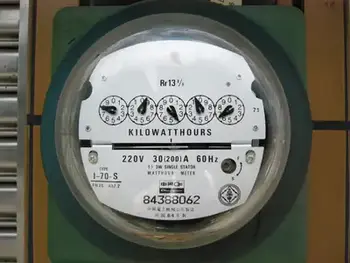Ampere to Ampere Hour Calculator Explained
An ampere to ampere hour calculator converts electric current (amps) to electric charge (Ah) based on time. Multiply current by time in hours to get ampere hours. It's useful for battery capacity, energy storage, and electrical system design.
What is "Ampere to Ampere Hour Calculator"?
An ampere to ampere hour calculator helps convert current flow over time into stored electrical charge.
✅ Multiply current (A) by time (h) to calculate charge (Ah)
✅ Useful for battery sizing and energy storage systems
✅ Supports electrical load and backup power planning
The Ampere to Ampere-Hour Calculator is a useful tool that allows users to estimate the capacity of a battery by converting the current supplied by an electrical device into ampere-hours (Ah). This calculation is particularly important when working with batteries, as it helps determine how long a battery can power a device based on the current it supplies and the device's usage duration. By using this calculator, you can easily convert amps to Ah and estimate the run-time for a specific battery. Understanding how voltage affects battery performance is key, and our voltage guide explains the role voltage plays in ampere-hour calculations. When calculating ampere-hours, it's important to account for voltage drop across conductors, especially in longer circuits. Use our voltage drop calculator to estimate losses and adjust your amp-hour estimations more accurately.
Frequently Asked Questions
What is an Ampere to Ampere Hour calculator, and how does it work?
This calculator helps convert the current, measured in amperes, into Ah capacity, which indicates how long a battery can supply a given current. For instance, a 100ah battery will deliver 100 ampere-hours of charge, meaning it can supply 1 ampere of current for 100 hours, or 10 amperes for 10 hours. To calculate Ah, the formula involves multiplying the current (in amperes) by the time in hours. For example, if a device draws 5 amperes for 20 hours, the result would be 100 ampere-hours. Learn how a watthour meter measures energy over time, complementing ampere-hour readings in power systems.
How do you convert amperes to ampere-hours using a calculator?
To convert amps to Ah, simply multiply the number of amperes by the number of hours the current is expected to flow. This step-by-step method is straightforward:
Ampere Hour (Ah) = Amperes (A) × Time (hours)
For example, a device drawing 5 amps for 10 hours would result in a consumption of 50 Ah. In practical applications, a 100ah battery could theoretically supply 5 amps for 20 hours before running out of charge. By following these steps, users can easily convert Ah to ensure they select the right battery for their needs. A basic understanding of watts law helps you relate amps, volts, and watts to better interpret your battery’s output.
Why is converting amperes to ampere-hours important for battery capacity calculation?
Knowing how to convert amperes to Ah is crucial in determining the capacity of a battery. It enables users to estimate the battery life of a connected device based on its current draw. This information is crucial for selecting the appropriate battery type for various applications, including powering electronic devices, off-grid systems, and backup power sources. A 100 Ah battery might be suitable for low-power consumption devices, while larger systems might require batteries with higher capacities. Knowing what ammeters measure can help you determine current flow before calculating ampere-hours.
What factors should be considered when using an Ampere to Ampere Hour calculator?
When using an Ampere to Ampere Hour Calculator, several factors can affect the accuracy of the results. These include the hour rating of the battery, which defines its capacity over a specific time period, as well as the efficiency of the battery, which can vary depending on the battery type. Additionally, environmental conditions, such as temperature, may affect the battery’s performance. It is also important to avoid common input errors, such as the “error this field is required” message, which can result from incomplete or incorrect data entry.
What are common applications of Ampere to Ampere Hour conversion in electrical systems?
Ah conversions are widely used in battery-powered devices, such as 100ah batteries for solar power systems, electric vehicles, and portable electronics. Calculating the battery Ah capacity is essential for ensuring that a battery can provide sufficient power for the required period. These conversions also help in sizing the battery system correctly and ensuring optimal performance over time. Many industries rely on these calculations for designing and managing power systems.
The Ampere to Ampere Hour Calculator is a valuable tool for converting amperes to Ah and estimating the capacity of a battery. Understanding how to calculate Ah ensures that you select the right battery type for your application, whether it’s powering an electrical device or an entire off-grid system. By considering factors like the hour rating and potential errors, you can make more informed decisions when choosing batteries for long-term use. Explore the concept of what is an ampere to understand the foundation of converting current to amp-hours in any system.
Related Articles






_1497175164.webp)



